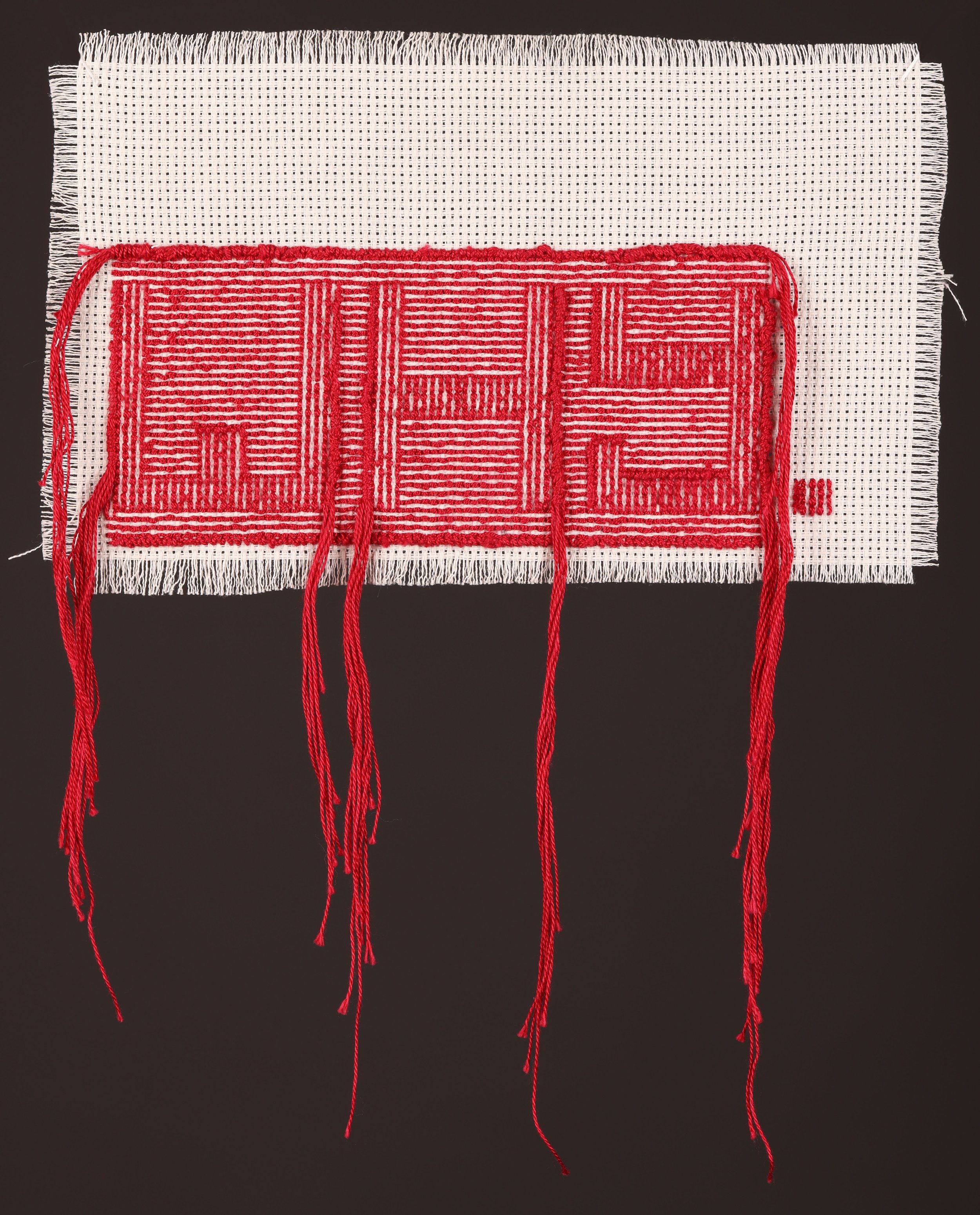WHY? - [2021]
I knew from watching my grandmother create tapestries and even chairs upholstered in embroidery that it was time-consuming. When I went to my first cross-stitch exhibition, all the women there wanted to check the back of my work, which is how they determined my “level” as an embroiderer. I learned that potential mother-in-laws in Palestine would check the backs of the embroideries of the son’s future wives. If the stitches were indeed neat, the stitcher was deemed marriageable.
The organization of stitching serves as a metonym for one’s capability to run a household. From my own observations, I saw that if my cross-stitches were pre-planned, I could make short, straight dashes on their reverse, as opposed to diagonal ones - this saves thread over time i.e., it is the most direct route between point a and b. In the minds of Palestinian mothers in law, I’m sure this was something to consider, for imported cotton thread is expensive and hard to come by. So, I began to practice. As I fell in love with craft, I decided to make the work more conceptual and contemporary, in line with my background as an artist. I wanted to think about the cross-stitch not as a 2D object but a 3D one. I set out to make artwork that was more minimal so that it could be more capacious in holding audiences’ multiple perspectives. This meant working with fewer colors and motifs, and finding a core concept to communicate with each tatreez work.
Once I developed my tatreez skills, I began to realize that cross-stitches manifested neat dashes on the back of the canvas when they were done in a uniform fashion. And THEN I realized that I could control which direction the dashes would go. Which meant that I could hide secret messages in the back of my work. I have included a sample of a work I did, where I imagined my future mother-in-law would look at the back of my canvas and find a message there for her.
I am currently working on two large embroidery canvases (each measuring 110 x 145 cm) that will hide messages in Arabic for my future mother-in-law when she checks the back of my stitches. The pictured piece is a prototype for these artworks.

